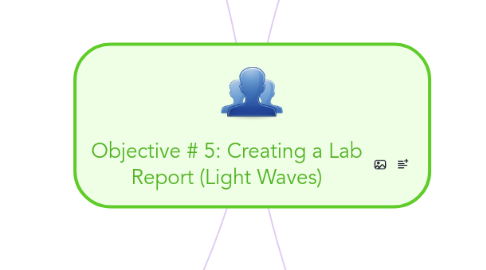
1. References
1.1. 1 Multiple Intelligences Self-Assessment. (n.d.). Retrieved April 09, 2016, from http://www.edutopia.org/multiple-intelligences-assessment Adapted from a questionnaire created by Branton Shearer of M.I. Research and Consulting
1.2. 2McCarthy, J. (2014, January 15). Learning Profile Cards. Retrieved April 09, 2016, from http://openingpaths.org/blog/2014/01/learning-profile-cards/
1.3. 3Framework for 21st Century Learning - P21. (n.d.). Retrieved April 09, 2016, from http://www.p21.org/our-work/p21-framework
1.4. 4 McCarthy, J. (2014, July 29). 15 Readiness Resources for Driving Student Success. Retrieved April 09, 2016, from http://www.edutopia.org/blog/differentiated-instruction-readiness-resources-john-mccarthy
1.5. 5 5Averette, P. (n.d.). Save the Last Word for ME. Retrieved April 9, 2016, from http://www.nsrfharmony.org/system/files/protocols/save_last_word_0.pdf National School Reform Faculty
2. Different Readiness (Based on the standardised MAP scores in Reading, Language, Math, and potentially Science)
2.1. Case Study 5: Nina is a Georgian female student who is below grade level on reading, on grade level for language, and on grade level (at the lower end) for mathematics
2.1.1. Teaching Strategy 1 (Process): Cubing would be a great way for Nina, who loves writing, to look at the various functions of mirrors and lenses. Examples could be: write a story that features a mirror or lens; recall a time when you used a mirror/lens - describe what it was used for; contrast the effects of mirrors and lenses (McCarthy)Teaching Strategy 2 (Content): Students can be grouped to review a content-based article on Lenses, and use the "Save The Last Word For Me" exercise (Averette).
2.1.2. Teaching Strategy 2 (Process): Demonstrate how a method would be created, using an analogy to cooking. Nina enjoys baking so brings in a cake and describes/presents the materials/method section (possibly enhanced with original photography) as a peer teaching method.
2.2. Case Study 6: Artem is a Ukrainian, male student who is on grade level for reading, on grade level for language, and at above grade level for mathematics
2.2.1. Teaching Strategy 1 (Process): Breaking up the class into 4 groups for a Jigsaw exercise on compiling a lab report, based on an article and checklist. Each group will tackle Question/Hypothesis; Materials/Methods; Data/Analysis; Conclusion/Discussion. Artem would do well as a group leader for his group (McCarthy).
2.2.2. Teaching Strategy 2 (Process/Product): Tiered based exercise, individually or in a team, about creating a model of how different colours are reflected or absorbed, from selected materials (McCarthy).
3. Differentiated Learning Styles (based on Howard Gardner's 8-styles) See Reference 1
3.1. Case Study 1: Yegor is a Ukrainian, male student with a Logical-Mathematical; Body-Kinesthetic; Naturalistic learning preference
3.1.1. Teaching Strategy 1 (Process): Use group-based learning centres (with various lenses) for students to create scientific illustrations of the images produced by convex and concave lensesCase Study 2: Vendi is a Czech female student with a Visual-Spacial; Musical; Body-Kinesthetic learning preference
3.1.2. Teaching Strategy 2 (Product): Create the final Lab Report (incorporating the hypothesis, materials, method, data, analysis, and conclusion) on an image and data-based infographic poster
3.2. Case Study 2: Vendi is a Czech female student with a Visual-Spacial; Musical; Body-Kinesthetic learning preference
3.2.1. Teaching Strategy 1 (Content): Watch a content-based film, accompanied by guided questions
3.2.2. Teaching Strategy 2 (Process): Photographic treasure-hunt of examples of lenses and mirrors in the school and home environment
4. Different Interests (Based on the creation of individualised learning profile cards) See Reference 2
4.1. Case Study 3: Maria is a Polish, female student with a preference for spending time with friends; singing; artistic pursuits; sports; taking care of animalsProblem 1
4.1.1. Teaching Strategy 1 (Process): A "Think Dots" exercise incorporating writing, researching and drawing skills. Questions could include: What does concave/convex mean? Draw a picture of the 2 types of lenses? List examples of things that contain lenses? What 2 types on lenses are found in animals? Show a scaled drawing of the image size seen through each lens? If you could not see far which lens would you need?
4.1.2. Teaching Strategy 2 (Product): Given that Maria has an interest in animals she could research the different types of lenses animals have (e.g. compound eyes in dragonflies) compared to humans (camera-type). This could serve as Background Research to her Lab Report, as well as enabling her to make real-life connections within her conclusion
4.2. Case Study 4: Gergo is a Hungarian, male student that likes to tinker with engineering projects, play basketball, read, create music, and chat with friends in his spare time.
4.2.1. Teaching Strategy 1 (Product): Gergo is interested in engineering and group work. As Background Research he could invesitage how lenses are made, and try building his own basic telescope.
4.2.2. Teaching Strategy 2 (Content): Students can be grouped to review a content-based article on Lenses, and use the "Save The Last Word For Me" exercise (Averette).

